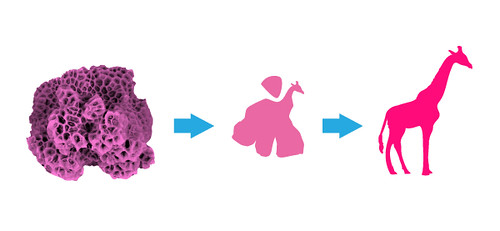

Not only that, the Barreleye as it's known, can see the future and emit it's findings via sonar. The only problem being that it can see just 5 seconds into the future and only has a 5 second memory.



 Last week, CSMB received several water samples from Holdrege, Nebraska's water and sanitation department, alleging that their city's water supply has been contaminated with jellyfish. After assuring us that it was not a hoax, our esteemed resident professor, Dr. Heng Nan Kan (who recently won a Nobel for discovering green jellyfish petroleum), tested the samples and confirmed that they were indeed tainted with what seems to be a highly evolved species of Hydromedusaes (athecate hydroids: order of the Hydrozoza).
Last week, CSMB received several water samples from Holdrege, Nebraska's water and sanitation department, alleging that their city's water supply has been contaminated with jellyfish. After assuring us that it was not a hoax, our esteemed resident professor, Dr. Heng Nan Kan (who recently won a Nobel for discovering green jellyfish petroleum), tested the samples and confirmed that they were indeed tainted with what seems to be a highly evolved species of Hydromedusaes (athecate hydroids: order of the Hydrozoza)."The il mangiatore umano della merda (Holdrege Jellyfish) is the one of the few aquatic organism that has completely adapted itself to co-exist in the human world," states Dr. Heng Nan Kan. "They are the equivalent of the modern day cockroach."
Highly transparent and hard to see unless closely examined, the Holdrege Jellyfish resembles no physical difference to its cousins, the Hydromedusae. They usually grow no larger than a nickel in size and can obtain a variety of shapes. This also explains why they have not been found until recently.

After talking at length with the Holdrege city council, CSMB was told that an incident that involved a 10 year old boy at Washington Elementary led to the discovery of the Holdrege Jellyfish infestation. According to council woman, Lisza Pat McHunt, the little boy was drinking from the water fountain when he felt a stingy sensation on his tongue and throat. Thinking that it was the cause of the Burts bee lip balm that he ate (the school administrators were aware of this behavior and noted that it happens frequently), Roger Lipskin didn't think much of it until his tongue started to swell uncontrollably. "Thankfully, our math/gym teacher, Mr. Smith got stung by a jellyfish while vacationing in Hawaii. He saw Roger's symptoms and knew right off the bat that it was caused by a jellyfish sting," says Principle Falcon. "Roger was lucky that he received the correct diagnoses in time."
 Currently, the city of Holdrege has issued a death risk alert and has been distributing cases of Coca-Cola, Coke Zero, Diet Coke, Diet Coke Lime/ Lemon twist, and Sprite in the town centre. "We are urging our residents to refrain from any water intake or bathing," says Mayor Towers, "Thanks to the good folks at Coca-Cola, we will be supplied with carbonated refreshments until we can provide our citizens with safe drinking water."
Currently, the city of Holdrege has issued a death risk alert and has been distributing cases of Coca-Cola, Coke Zero, Diet Coke, Diet Coke Lime/ Lemon twist, and Sprite in the town centre. "We are urging our residents to refrain from any water intake or bathing," says Mayor Towers, "Thanks to the good folks at Coca-Cola, we will be supplied with carbonated refreshments until we can provide our citizens with safe drinking water."
Early this morning, Dr. Heng Nan Kan and his brother Dr. Tai Nan Kan left for Holdrege in a joint effort with the Dauphin Island Sea Lab to study more about the Holdrege Jellyfish. The city council also hopes that these scientists will find a solution to their jellyfish predicament. More information about their progress will be posted early next week.





 Jeremy Ryan's (pictured left) death marks the fourth Triggerfish incident since 2007.
Jeremy Ryan's (pictured left) death marks the fourth Triggerfish incident since 2007.






